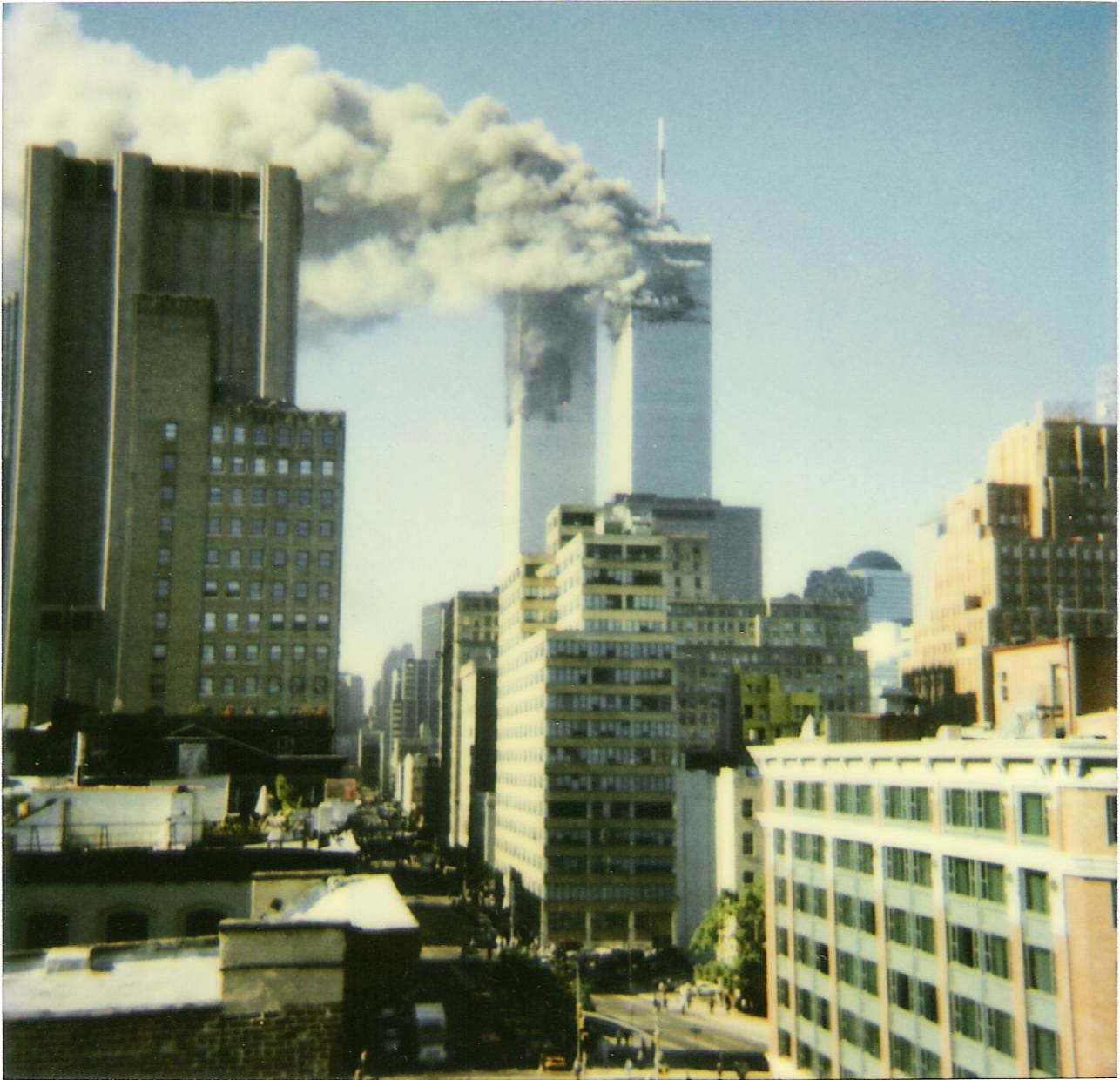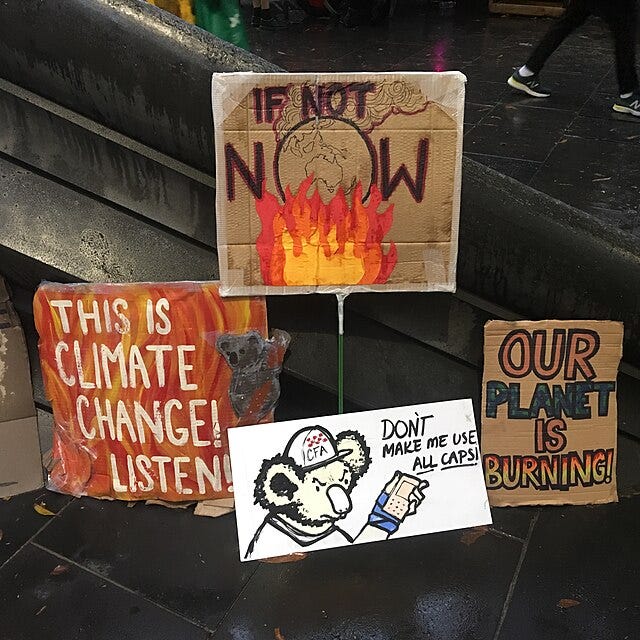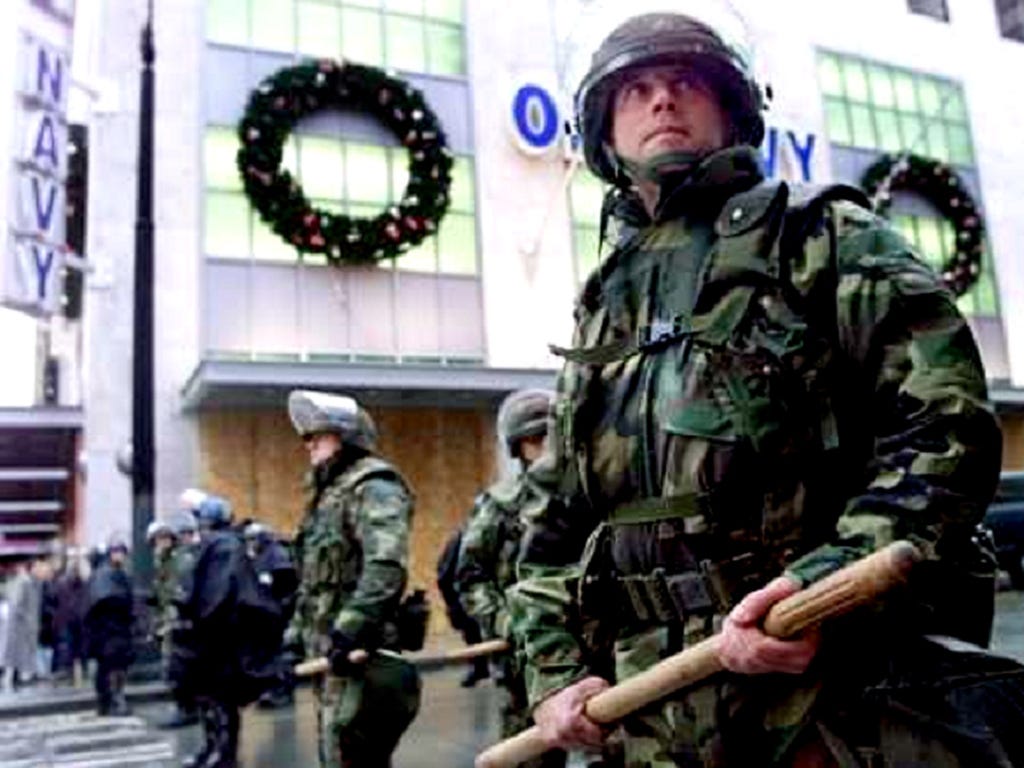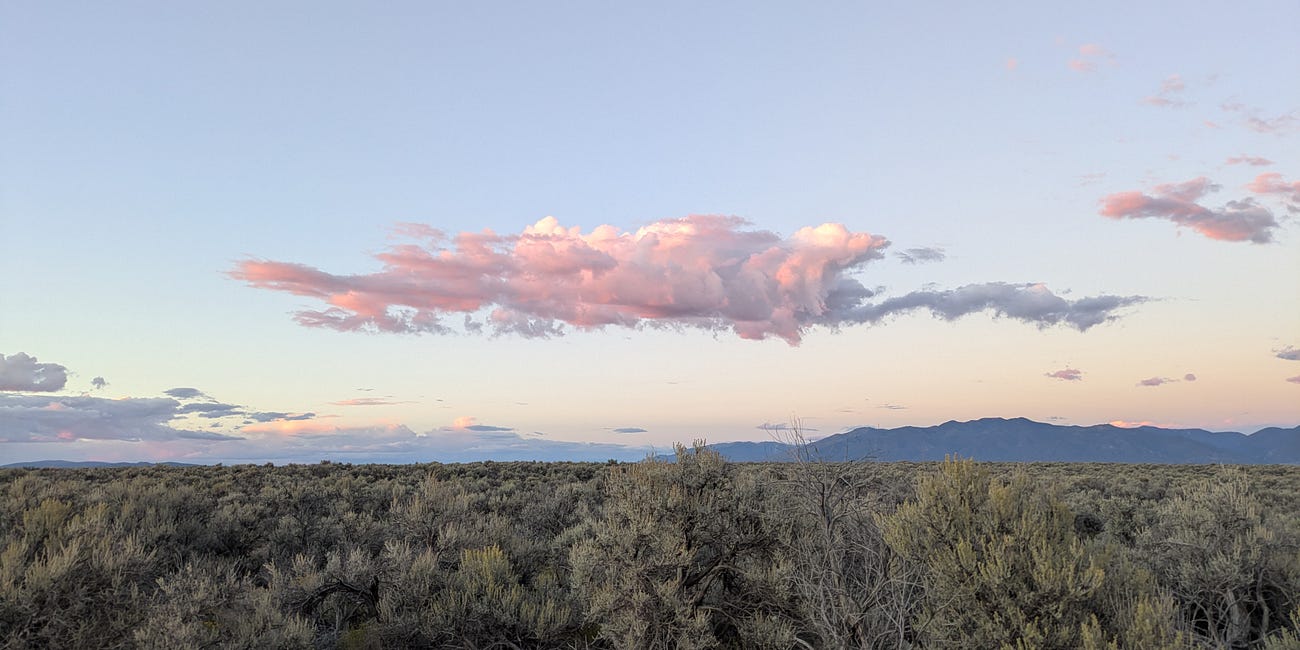Collapse Isn’t Coming, It’s Here
How to Adapt and Thrive During Society’s Breakdown
Plenty of people predict a coming collapse while others prepare for a kind of sci-fi apocalypse that sends us back to the dark ages overnight or reduces society to a brutal, Hobbesian state of nature. But history doesn’t play out nicely over 2 hours like a blockbuster screenplay, neither have historical collapses, especially at the scale of something like the United States or our broader, interconnected global society and economy.
Collapse is not one dramatic apocalyptic event but rather a multitude of disruptions on society that build and build. Like frogs in boiling water, as events grow more catastrophic and extreme, we become desensitized, the way we are with the onslaught of corporate subscription plans or school shootings. Most people continue to remain opiated by the newest technological trends and fail to look up and see the big picture.
Collapse can stretch across centuries. The Dark Ages occurred in the shadow of collapsing empires and despite what you’ve been taught, yielded a fair amount of innovation and progress, from agriculture to architecture.
And this is where we are today, in the midst of the slow (but seemingly accelerating) unraveling of modern society; although technology is likely to compress the cycle of collapse and rebirth or reinvention from centuries to decades. It’s time to accept what you already sense, it’s the end of the world as we know it.*
*Michael Stipe had collapse awareness in 1987
What Collapse Awareness Means
Collapse awareness is a shift in consciousness in which we accept that our current society is unstable, unsustainable and in decline. Collapse awareness is recognition that the systems currently supporting modern society are in demise and will most likely fail and/or be dramatically transformed within the next 10-40 years.
Once you give into collapse awareness you will begin to grieve the loss of life as you know it or knew it in childhood. You may deny it at first but eventually you will need to come to accept it. With acceptance, you can grow your resilience and preparedness and learn to adapt, contributing to what is hopefully a transformative soft landing rather than an abrupt, more destructive one.
Warning Signs We’re Already Seeing
Are you in the denial phase? There is evidence, not just in the States but globally, that we are in the era of collapse. Evidence is drawn from archaeological, historical, and environmental records of past civilizations that declined or disappeared, such as the Mayan civilization and Roman Empire. Based on this, research suggests that symptoms of a modern collapse include:
Political polarization and rising hostility between factions causing governments to either get stuck in gridlock or turn to totalitarianism.
Public mistrust in government and media.
Overexploitation of natural resources accelerating environmental destruction.
Growing number of climate disruptions such as drought, floods, and fires.
Economic strain, including unsustainable debt, inflation, job loss, trade decline, and recurrent financial crises.
Growing gap between the rich and poor with wealthy elites growing wealthier while everyone else struggles to make ends meet.
Global shortages due to supply chain disruption, especially in medicine, food or fuel.
An overproduction of elites, which tends to further destabilize things.
Does this sound eerily familiar to you? Are you beginning to question everything or have you already come to terms with the inevitable?
How Eric Came to See the System Cracking
Once I had this nightmare so vivid it still shakes me almost a quarter century later. There’s people in the lobby of a big building downtown. They’re panicking. Half the people in the crowd are firefighters. They’re trying to evacuate everyone, but it’s chaos. Every few moments there’s a loud bang and the sound of glass breaking somewhere above.
The scene is not a product of my subconscious, but a reconstruction of one many of us watched on primetime network TV (back when it still mattered) called simply “9/11” — shot by two French documentarians who happened to be working on a movie about one of the NYFD ladders that responded to Tower 1. It aired on March 10, 2002, the eve of the 6-month anniversary of the terrorist attacks the title commemorates.
The horrible banging sounds of glass breaking would startle me awake each time I had the nightmare. As the firefighters recounted, each crash was a life lost as people trapped in the high floors of the World Trade Center jumped to their deaths and crashed through the mezzanine ceiling below in a desperate attempt to escape the flames and smoke.

Nightmares had bled into everyday life in America.
What happened to Tower One roughly 76 minutes after the scene that would replay in my sleep is well known, but it took nearly two decades for me to grasp the salient symbolism: the collapse of the World Trade Center that day was the most on-the-nose illustration of a society undergoing the same physical process, only at a much slower pace.
The intelligence failures that led to the 9/11 attacks were unthinkable in the face of American military and spycraft supremacy, so Washington and Hollywood had told us for generations. Such a lapse, and the wild overreach in reaction to the attacks that would launch multiple invasions on largely innocent populations in the Middle East and the creation of a sprawling surveillance state, are not indicators of a healthy society supported by well-functioning or properly checked systems of governance.
Looking back, the signs of slow-motion collapse are there before 9/11: the wild and questionable resolution of the 2000 election, the shock of the Columbine massacre, even the Watergate scandal of the 1970s now resemble harbingers of darker times ahead.
Basically, my adult life seems to have been lived in an accelerating collapse punctuated by tentpole events – 9/11, Katrina, the Great Recession, the rise of Trumpism, increasingly extreme weather events, Covid, Ukraine, Gaza, just to name a few.
How Johanna Came to See the System Cracking
Born in 1975, just five years after U.S. oil production peaked and two years after the oil embargo, I have had collapse awareness my whole life, an innate desire to be prepared for the end of the world as we know it, which led me to live off grid in Alaska and then New Mexico. However, I would say I really came to understand it in 1999 when I was living in Seattle and watched riots breakout across the city during the WTO conference, which was the precursor to free trade globalization.
I quickly moved to Alaska and in the years that followed, I watched our society outsourced— the global world became slaves to western capitalism, Americans shamelessly bought cheap plastic goods by the truck load, inhumane factories and child labor proliferated overseas perpetuated by Americans’ need for more crap, and the oceans filled with plastic flotsam. My suspicions were verified by the kamikaze bombing by jihadists of the World Trade Tower in 2001.
In 2006, from my mountain homestead in northern New Mexico, I watched as Al Gore’s Inconvenient Truth, which publicly shed light on global warming in such a way that could not be denied, caused a mass of climate deniers who did not want to stop driving their SUVs or eating beef. I then experienced the 2008 Global Financial Collapse, which led to worldwide economic collapse of major financial institutions, and basically destroyed the middle class when the real estate bubble burst. Massive numbers of people were unemployed while our own government and tax dollars bailed out the filthy rich.
Soon after, extreme political polarization and distrust in government and media led to the election of Donald Trump, the most controversial character in American history. The rise in social media algorithms spread misinformation, caused intense tribalism, and weakened civil discourse.
I moved off the grid into a small strawbale desert home when the Covid-19 pandemic started, thankfully, because it was followed by a worldwide recession and record inflation, which we still feel today. Most financial analysists predict worldwide debt increasing. As climate change worsens and major contributors are doing little or not enough about it, megadroughts, wildfires, floods and rising oceans continue to put our habitat at risk.
So, yeah, I’ve had time to come to terms with my collapse awareness and have moved definitively into the resilience and adaptation phase.
The Future We’re Facing
Finland put out a big report this year imagining what the world could look like by 2045, and one of their scenarios called The Fracturing World is pretty grim. It pictures a future where countries stop cooperating, climate agreements fall apart, and global alliances like NATO and the EU slowly break down. Trade wars ramp up, authoritarian governments rise, and democratic systems lose trust as things like disinformation, inequality, and climate disasters pile up. The report is meant to help Finland plan in case the world heads in that chaotic direction.
MIT’s updated Limits to Growth model shows that by around 2040 the global economy will likely hit a wall if things keep going as they are. Industrial production, food output, and living standards are expected to start dropping as we run low on resources and ecosystems wear out. The new data updates from 2025 match the same pattern predicted in the 1970s: humanity overshoots what the planet can sustain, then declines as energy and raw materials become harder to get and pollution keeps rising.

If collapse plays out in the U.S. the way analysts and military planners describe, daily life will feel a lot less reliable:
Power outages could become frequent, like what California has already seen in heat waves, with parts of the grid shutting down to prevent fires or overstress.
Water systems might fail in drought areas or flood zones, and food could get more expensive and scarcer as climate shocks hit farms and shipping.
Internet and phone networks might go down for stretches, disrupting everything from banking to supply chains.
The U.S. Army has even warned that if the national grid fails, things like refrigerated food, drinking water, fuel access, hospitals, and communications could all stop working within days.
Building Collapse Resilience
Preparing for collapse isn’t just about stockpiling stuff but about building personal and community resilience and steadily decreasing your dependence on big systems for your basic needs. Here are some things you can begin to do to prepare for the gradual collapse ahead:
Go off grid gradually: Learn to generate and store your own power; collect and purify rainwater; and use passive heating and cooling methods.
Grow your own food: Develop gardens, orchards, seed saving, and healthy soil practices including greenhouses to sustain year-round sustenance.
Preserve and store: Master canning, fermenting, dehydrating, and root cellaring to survive seasonal shortages.
Practice herbalism: Identify and cultivate local medicinal herbs for first aid, stress, viruses and infections when medical systems fail.
Raise or forage food: Keep chickens, goats, or bees, and learn sustainable hunting, trapping, fishing, and wild food foraging.
Repair and build: Learn basic construction, mechanical and low-tech maintenance to stay independent from supply chains.
Practice localism: Join or create community groups that share goods, skills, and labor; use local currencies or bartering networks.
Focus on mental resilience: Cultivate patience, emotional balance, and adaptability through meditation, nature connection, and purpose.
Design for sustainability: Build natural homes and communities that conserve energy, recycle waste and grow food.
The modern society we created is not sustainable and cannot last in its current form and trajectory. In order to adapt, we will need to turn to the ways of our ancestors, the ways of humans for millions of years. Our society has become so detached and abstract, we have lost our purpose. Getting our hands dirty again and returning to the land, to our bodies, to our communities, is a beautiful opportunity to regrow the world in a gentler light.
Collapse is Not the End, It’s Transformation
We aren’t in a burning building that will soon crumble to the ground like the twin towers did in just seconds. It’s more like being in one of those very old barns you pass on many a two-lane rural road: it’s old, the paint has faded and it’s hard to tell just how structurally sound it is, but the rot is obvious and the moss on the roof certainly doesn’t inspire any confidence.
And yet, it’s possible there’s still some good bones in there. It might not be totally beyond saving. But first, it’s going to need a detailed and honest appraisal of its current state.
You May Also Enjoy:
5 Best States to Live Off the Grid
How-To is a new sub-section of Our Uncertain Future that provides researched and/or instructional content.
Freedom isn’t Free
Dog Man is back on his land and I’m worried. I don't use that name to be dehumanizing, I just don't know his actual name and it's a quick and easy way to refer to him that my husband and daughter will understand. I call him Dog Man because he usually has about eight dogs at a time, seemingly from the same litter. Often, he breeds them unintentionally. T…







This just confirmed why I keep longing for a simpler life on the countryside, living in harmony with nature, growing things, keeping a few animals etc… A longing for true sustainability and connection. To get my hands dirty, as you say. I think it’s the only way. Back to the roots. 🤎🍂
Thanks, Johanna and Eric. Sharing your newsletter. :)